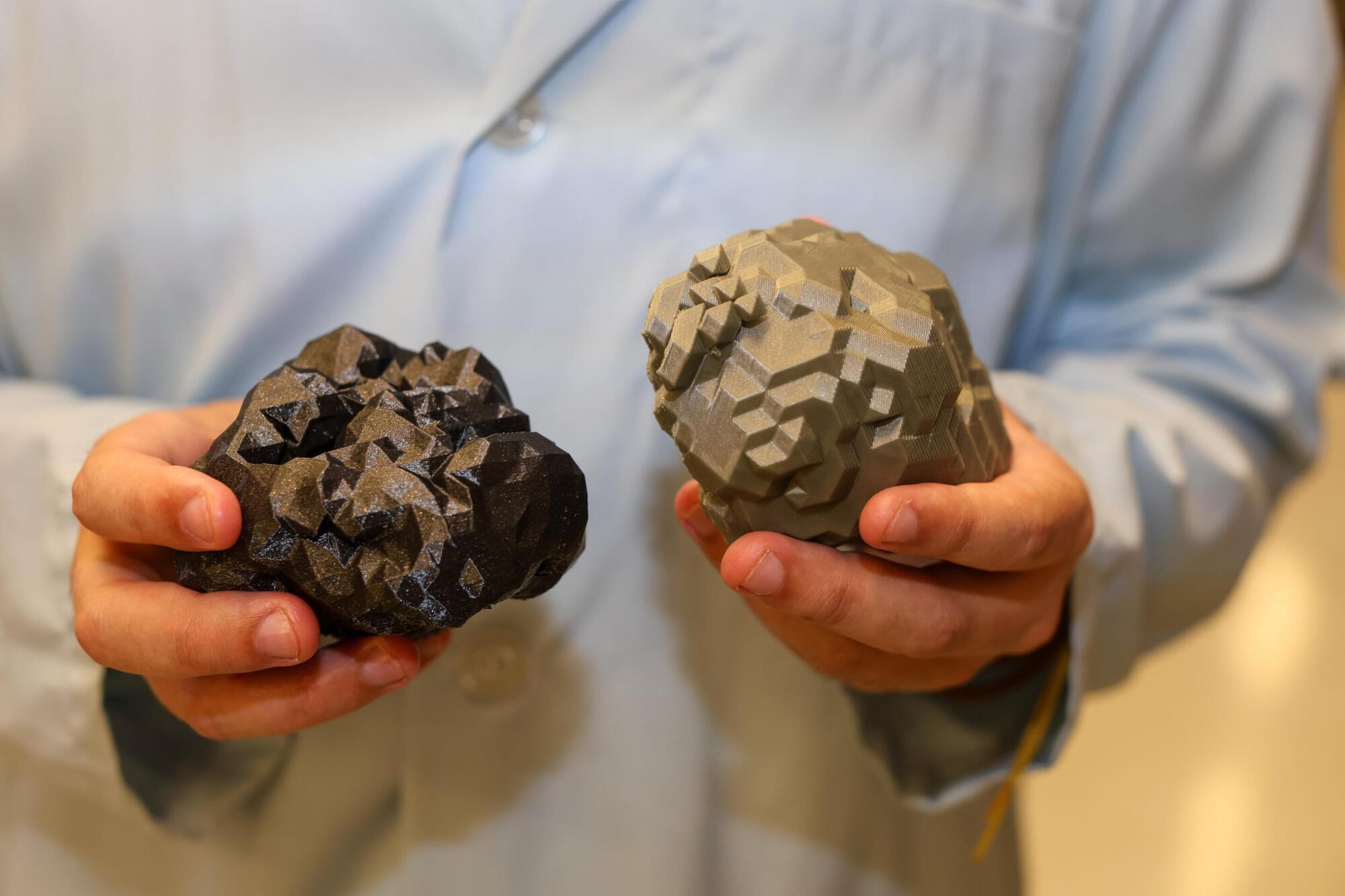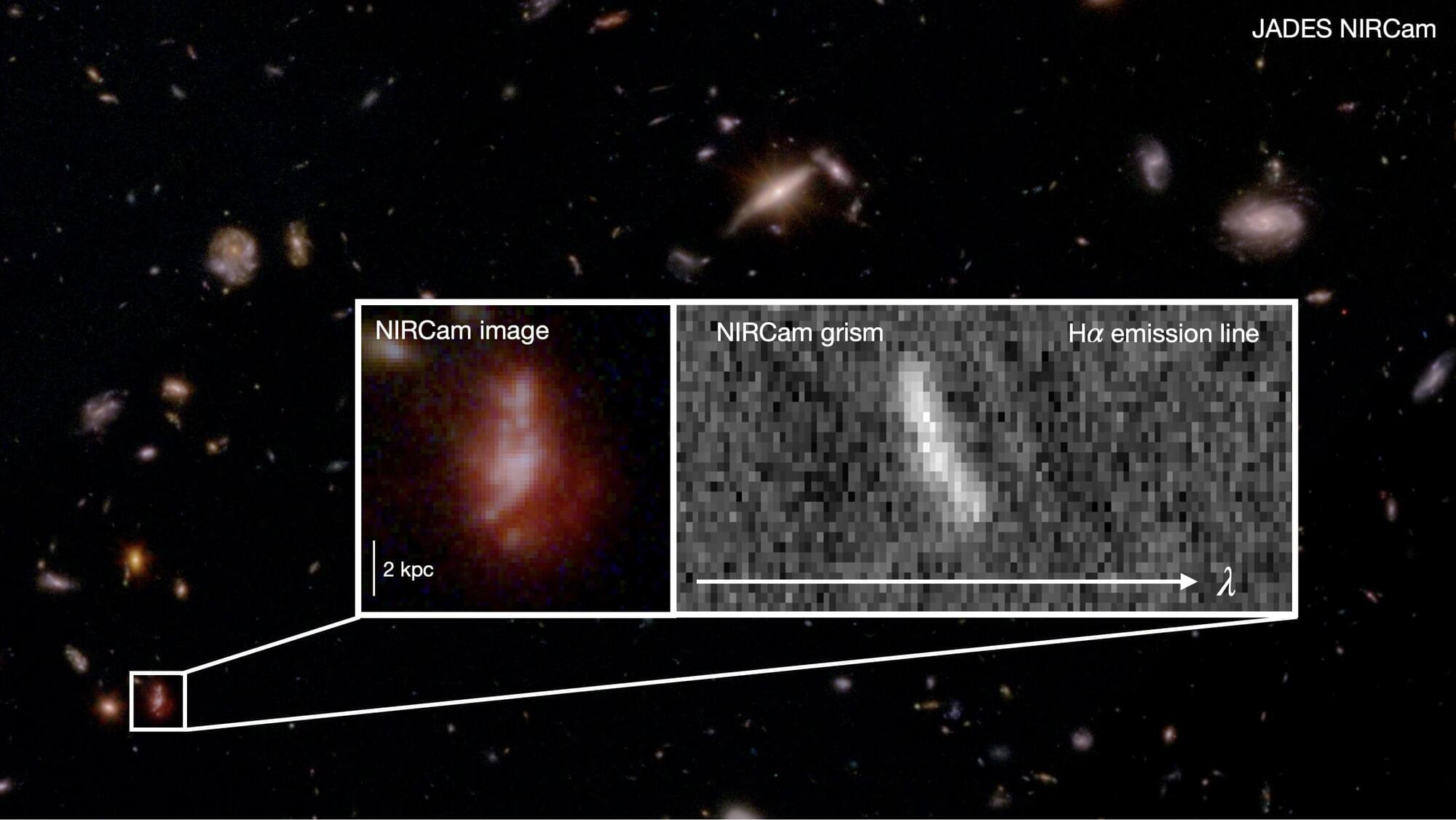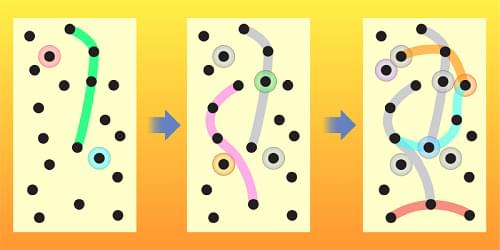Microbes high in Earth’s stratosphere produce pigments to protect them from UV light – so similar molecules could be biosignatures of life elsewhere in the galaxy



This week, researchers reported the discovery of four Late Bronze Age stone megastructures likely used for trapping herds of wild animals. Physicists have proven that a central law of thermodynamics does not apply to atomic-scale objects that are linked via quantum correlation. And two Australian Ph.D. students coded a software solution for the James Webb Space Telescope’s Aperture Masking Interferometer, which has been producing blurry images.
Additionally, researchers are networking tiny human brain organoids into a computing substrate; evolutionary biologists have proposed that environmental lead exposure may have influenced early human brain evolution; and physicists have provided a predictive model to explain accelerating universal expansion without dark matter:


Are you keen to explore quantum concepts with your students? Have you been looking for ideas on how to make abstract ideas more accessible and engaging for young learners?
The 2025 Governor-General’s Design Challenge celebrates the Year of Quantum Science and Technology by supporting you to turn your students into “photon detectives” in the classroom.
This hands-on STEM experience for students in Years 5–10 sets out a challenge for your class to complete, with the challenge introduced in a special video co-presented by the Governor-General, Her Excellency the Honourable Sam Mostyn AC and Questacon.

Lipid nanoparticles (LNPs) are the delivery vehicles of modern medicine, carrying cancer drugs, gene therapies and vaccines into cells. Until recently, many scientists assumed that all LNPs followed more or less the same blueprint, like a fleet of trucks built from the same design.
Now, in Nature Biotechnology, researchers from the University of Pennsylvania, Brookhaven National Laboratory and Waters Corporation have characterized the shape and structure of LNPs in unprecedented detail, revealing that the particles come in a surprising variety of configurations.
That variety isn’t just cosmetic: As the researchers found, a particle’s internal shape and structure correlates with how well it delivers therapeutic cargo to a particular destination.

Astronomers using the James Webb Space Telescope (JWST) have captured the most detailed look yet at how galaxies formed just a few hundred million years after the Big Bang—and found they were far more chaotic and messy than those we see today.
The team, led by researchers at the University of Cambridge, analyzed more than 250 young galaxies that existed when the universe was between 800 million and 1.5 billion years old. By studying the movement of gas within these galaxies, the researchers discovered that most were turbulent, “clumpy” systems that had not yet settled into smooth rotating disks like our own Milky Way.
Their findings, published in Monthly Notices of the Royal Astronomical Society, suggest that galaxies gradually became calmer and more ordered as the universe evolved. But in the early universe, star formation and gravitational instabilities stirred up so much turbulence that many galaxies struggled to settle.

The number of people living with dementia worldwide was estimated at 57 million in 2021 with nearly 10 million new cases recorded each year. In the U.S., dementia impacts more than 6 million lives, and the number of new cases is expected to double over the next few decades, according to a 2025 study. Despite advancements in the field, a full understanding of disease-causing mechanisms is still lacking.
To address this gap, Rice University researchers and collaborators at Boston University have developed a computational tool that can help identify which specific types of cells in the body are genetically linked to complex human traits and diseases, including in forms of dementia such as Alzheimer’s and Parkinson’s.
Known as “Single-cell Expression Integration System for Mapping genetically implicated Cell types,” or seismic, the tool helped the team hone in on genetic vulnerabilities in memory-making brain cells that link them to Alzheimer’s ⎯ the first to establish an association based on a genetic link between the disease and these specific neurons. The algorithm outperforms existing tools for identifying cell types that are potentially relevant in complex diseases and is applicable in disease contexts beyond dementia.


Because oxygen-bearing sulfate minerals trap and preserve signals from Earth’s atmosphere, scientists closely study how they form. Sulfates are stable over billions of years, so their oxygen isotopes are seen as a time capsule, reflecting atmospheric conditions while they were evolving on early Earth—and possibly on its planetary neighbor Mars.
A new study led by a University of Utah geochemist examines how sulfate forms when pyrite, commonly known as “fool’s gold,” is oxidized in environments teeming with microbes versus those without them. The researchers focused on Spain’s Rio Tinto, a contaminated river passing through a region where iron and copper were mined for thousands of years.
The paper titled, “Triple-oxygen isotopic evidence of prolonged direct bioleaching of pyrite with O2,” appears in Earth and Planetary Science Letters.

An improved algorithm for learning the static and dynamic properties of a quantum system could have applications in quantum computing, simulation, and sensing.
Quantum systems are notoriously hard to study, control, and simulate. One key reason is that their full characterization requires a vast amount of information. Fortunately, in the past decade, scientists have shown that many physical properties of a quantum system can be efficiently predicted using much less information [1, 2]. Moreover, researchers have built quantum sensors that can measure these properties with a much smaller uncertainty compared with the best classical sensors [3]. Nevertheless, it has been difficult to achieve both efficient predictions and precise measurements at the same time. Now, building on previous breakthroughs in the field, Hong-Ye Hu at Harvard University and his colleagues have demonstrated a new algorithm that characterizes quantum systems of any size with optimal efficiency and precision [4].